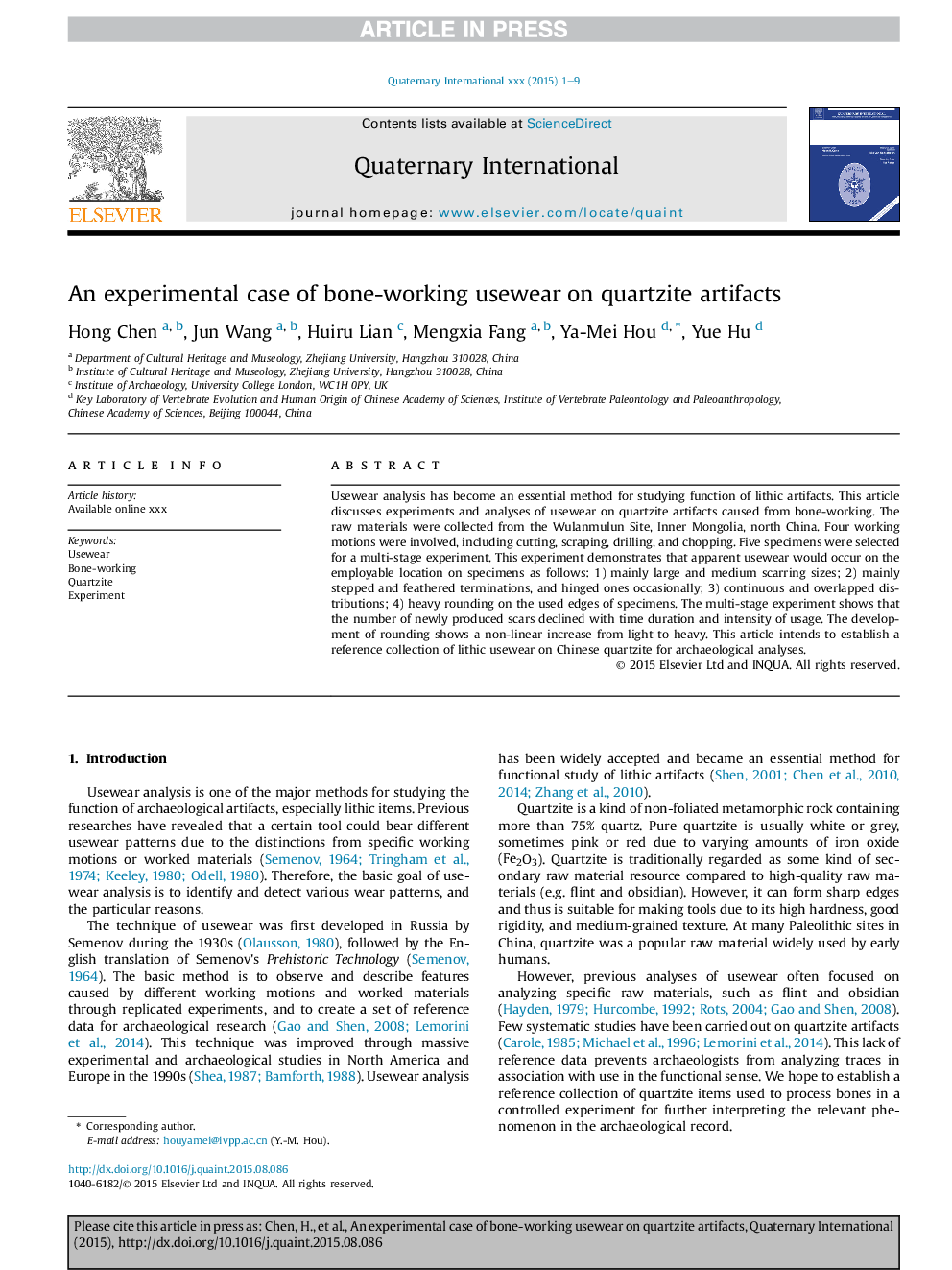| Article ID | Journal | Published Year | Pages | File Type |
|---|---|---|---|---|
| 5113360 | Quaternary International | 2017 | 9 Pages |
Abstract
Usewear analysis has become an essential method for studying function of lithic artifacts. This article discusses experiments and analyses of usewear on quartzite artifacts caused from bone-working. The raw materials were collected from the Wulanmulun Site, Inner Mongolia, north China. Four working motions were involved, including cutting, scraping, drilling, and chopping. Five specimens were selected for a multi-stage experiment. This experiment demonstrates that apparent usewear would occur on the employable location on specimens as follows: 1) mainly large and medium scarring sizes; 2) mainly stepped and feathered terminations, and hinged ones occasionally; 3) continuous and overlapped distributions; 4) heavy rounding on the used edges of specimens. The multi-stage experiment shows that the number of newly produced scars declined with time duration and intensity of usage. The development of rounding shows a non-linear increase from light to heavy. This article intends to establish a reference collection of lithic usewear on Chinese quartzite for archaeological analyses.
Keywords
Related Topics
Physical Sciences and Engineering
Earth and Planetary Sciences
Geology
Authors
Hong Chen, Jun Wang, Huiru Lian, Mengxia Fang, Ya-Mei Hou, Yue Hu,
